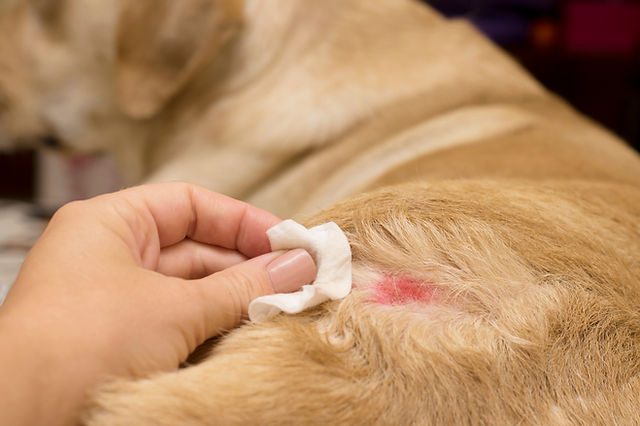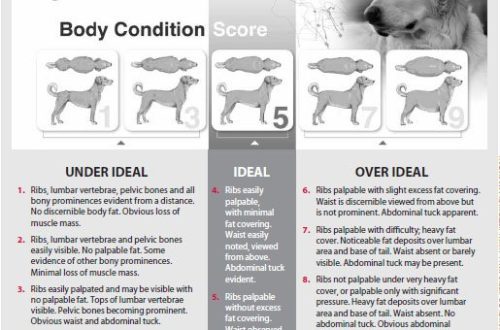
Пиодерма код паса: шта треба да знате
If the dog itches, redness is visible on the skin, pimples and an unpleasant odor appear, the dog may have developed a pathological process. It is called canine pyoderma or, in the case of puppies, puppy pyoderma. This is a common skin disease that affects dogs of all breeds, sizes and ages. How to treat pyoderma in dogs – later in the article.
Садржај
What is pyoderma in dogs
Pyoderma is a superficial bacterial infection that affects hair follicles and surrounding skin tissue. The word “pyoderma” is derived from two Greek words “pyo” – pus, “derma” – skin. Pyoderma in dogs usually has a cause, such as:
- Penetration under the skin of foreign bodies, such as seeds of meadow grasses.
- Trauma or bite wound.
- Allergy or hypersensitivity to fleas, food or environmental factors.
- Scabies mites.
- Hormonal disorders such as Cushing’s syndrome, hypothyroidism, or autoimmune disorders.
- Taking immunosuppressive drugs, including chemotherapy and steroids.
- An unbalanced or inappropriate diet.
Pyoderma in dogs: symptoms and signs
Pyoderma can manifest itself in different ways. It can develop in a specific area or completely cover the dog’s skin. Most often, the disease affects the skin folds, chin, lips, folds of the genital gap and the skin between the fingers and paw pads. In some cases, pyoderma causes severe itching, such as with allergic flea dermatitis, and sometimes does not bother the dog at all. Signs of pyoderma to look out for include:
- Red cones.
- Пустуле.
- Љуштење коже.
- Губитак косе.
- Промена боје коже.
- Прекомерно осипање.
- Црвенило.
Puppies can get sick with a special type of disease – puppy pyoderma. If your puppy develops red bumps in his armpits, groin, and/or abdomen, he may have puppy pyoderma. Red bumps may increase in size and spread over the skin. Puppy pyoderma can cause your pet to be slightly itchy, but in general, dogs with Puppy Pyoderma are healthy.
Pyoderma in dogs: treatment
Treatment for pyoderma usually focuses on getting rid of the bacterial infection and addressing the underlying cause, if possible. This requires antimicrobial therapy – oral antibiotics or topical antibacterial drugs, shampoos or sprays applied to the affected area. Pyoderma is usually caused by staph bacteria. If a pet does not have resistance to anti-staph drugs, these infections are usually easily cured.
If a veterinarian suspects pyoderma, they will take a skin scraping and examine it under a microscope to look for bacteria and other organisms, such as mites. He may prescribe culture for microflora or a study using a Wood’s lamp to exclude lichen.
Determining the underlying cause of the infection is more challenging in canine pyoderma. This will have to be clarified by the owner and the veterinarian. The doctor may order a variety of tests for the dog, such as blood, urine, or skin scrapings.
The role of nutrition in the treatment and prevention of pyoderma
A dog’s diet plays an important role in the treatment and prevention of pyoderma. If the pet receives less nutrients, his body directs all available resources to the vital organs. As a result, there is a deterioration in the quality of the skin and coat, and signs of pyoderma may appear. Dogs with food intolerance to food ingredients or food allergies may develop pyoderma as a result of improper diet. If your four-legged friend has digestive problems, he may be prone to skin problems, including pyoderma.
If a veterinarian suspects a food allergy, they may recommend giving your dog a new or hydrolyzed protein food to see if the skin problem goes away.
If your dog does not have a food allergy and the pyoderma occurs secondary to other health problems, including hormonal imbalances, it is recommended that you feed your pet a diet specially formulated for dogs with sensitive skin.
It’s important to make sure your dog is getting the right nutrition, specifically formulated to support the health of the specific cause of pyoderma. Your veterinarian will help you choose the right food.
Pyoderma is a rather serious problem, but a little knowledge and caution can help solve it. If a dog suffers from pyoderma, it should be understood that there is a cause that requires treatment. Any sign of infection should contact your veterinarian.





